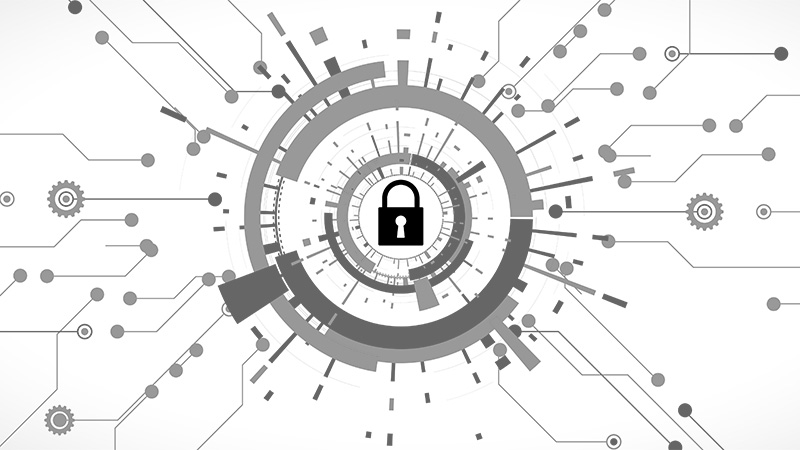Difficulty in cyber security
Cyber security hardening is a comprehensive approach to Protecting your organization from intruders, and reducing risks. By reducing your attack surface, vulnerability is reduced at the same time.
Hardening (or system hardening) considers all the flaws and entry points that could be targeted by attackers to compromise your system. While innovative and determined cybercriminals will look for any opportunity to breach your security for their own gain, hardening shrinks the surface as much as possible, adding more difficulty to the attacker’s efforts.
The benefits of hardening
Hardening the system is more than just a one-time exercise; It requires continuous effort. However, it’s not all for nothing, as a hardened system provides many benefits, including:
- Increased system functionality through best practices and reduction of unnecessary programs and vulnerabilities. As such, organizations experience fewer operational issues and inconsistencies, reduced risk of misconfigurations, and less friction.
- A higher level of security by reducing the attack surface. Organizations and end users have a lower risk of data breaches, malware, unauthorized account access, and other malicious activity.
- Streamlining compliance and auditing due to reduced environmental complexity. Hardening eliminates unnecessary or nonessential systems, accounts, and programs, resulting in a more stable configuration and a more transparent environment.
types of hardening
As a multifaceted topic, hardening can overwhelm organizations when planning or revising their security strategy. There are different types of hardening to be aware of, which can be divided into five key categories: configuration, application, software, operating system, and server hardening.
Configuration hardening
Configurations are an essential part of modern systems, serving as messengers and parameters to guide system components on how to behave. Hardening configuration components begins with assessing the state and dependencies of the system’s customizable components.
For example, setting all server ports open at all times is a tempting invitation for criminals to break into your system, using whatever they find for their own personal gain. Closing all ports is, of course, impossible. Hardening finds the “sweet spot” of security and functionality.
Achieving configuration hardening takes time, as you will need to evaluate the components of your environment and test configurations and interdependencies before they can be adopted. This may mean testing and implementing changes during planned downtime, depending on your environment and requirements.
Watch out for configuration drift, where systems inevitably drift away from your established company standard. Capture these changes and validate a policy update or push them back into compliance.
application hardening
Games apps a A significant role in the modern world. In the second quarter of 2022, 3.5 million apps were registered in the Google Play store and 2.2 million in the Apple app store. Google takes the trophy for the highest app downloads ($27.7 billion in Q3 2022), while Apple dominates revenue ($21.2 billion in Q3 2022).
With usage numbers like this, app security is top of mind for many end users, especially as they provide personal data or payment information through app interfaces.
Application hardening means protecting an application from intruders by increasing security and eliminating vulnerabilities. In the case of applications, this can be divided into three main aspects:
- Understanding the threat landscape as it relates to your application to make more informed prevention decisions.
- Having a comprehensive detection process in place to stop or block cyber attacks as they occur. This includes identifying privilege escalation, identifying when a user has granted authorized access to the system by logging into the application. Jailbreaking and rooting a device raises the threat level, and escalation detection will alert the administrator when the root level of the system has been compromised.
- To prevent application-level attacks, consider best practices, including encryption, application permission logging, and authentication hardening (such as implementing key logging prevention and detection).
Application hardening applies to both internal and third-party applications, and the above steps should take into account the full breadth of applications. To harden applications in your environment, best practices include: using a firewall, installing automatic updates and patches, using antivirus software, and storing and encrypting credentials. conductive Static application security checks (SAST) during the development cycle, and ongoing Dynamic application security testing (DAST).
Software hardening
In the modern workforce, applications and software go hand in hand to support end users with different needs. The importance of application hardening thus also extends to the application running within your organization. This is especially true if your organization is writing its own software or customizing off-the-shelf packages.
The hardening software relies on three steps:
- Analysis – includes static and dynamic analysis to discover and fix weak points, as well as audit the current scope and risk profile of software applications and development work processes.
- Transformation – Using diversification and obfuscation techniques to thwart attacks.
- Monitoring – to support ongoing assessment and protection, including alerts or activation actions to protect critical systems or data.
An exploited software vulnerability can be a gateway to costly and disruptive outcomes, and software hardening will help prevent critical data from falling into the wrong hands.
Operating system (OS) hardening.
An important aspect of hardening your environment is at the operating system level. Operating system hardening is critical to the effectiveness of your cybersecurity strategy and works in conjunction with software and application hardening.
Essentially, OS hardening uses patches and security protocols to secure your operating systems. The focus of OS hardening is to increase the protection of hardware and software assets, thereby maximizing protection at every level.
Consider the following elements in your OS hardening procedure:
- Firewall configurations – limit traffic to necessary ports, and control outgoing and incoming traffic flows only to what is needed for normal business activity.
- Defining user roles – Create policies and access levels that limit users to only the functions necessary to do their jobs.
- Protect all systems from common threats – use anti-malware and endpoint detection and response solutions.
- Isolate – Protect your environment by isolating workloads and data whenever possible.
- Remove unnecessary items – this includes applications, ports, resources, peripherals and operating system features.
- Patching and updating – Use automatic patching and update installation whenever possible. Make sure you deploy updates manually when automatic updates are not possible.
- Workflow development – This includes continuous monitoring and ongoing evaluations of operating systems.
Each operating system will have the details required to harden the operating system. MacOS, Windows, and Linux systems have different levels of out-of-the-box protection and ambitious cyber protection, so make sure your strategy takes these individual needs into account.
Server crash
There are many metaphors that can be used to illustrate the importance of servers in your environment: the backbone, the general, the card dealer. Whatever you call them, your servers are the gatekeepers of everything precious and valuable in your environment.
Server hardening is the process of securing server ports, permissions, functions and components to reduce the attack surface. True server hardening relies on a security framework that takes the needs of each server into account. Your web server has different security needs than your database server, for example, due to accessibility and functionality.
Consider some key aspects to help you get started with server hardening:
- Secure accounts and logins by changing default access credentials and removing default accounts; Disable guest and vendor accounts.
- maintain components and subsystems and disable redundant or unused services, including device drivers, scripts, file systems, subsystems and features; Windows servers should only have active roles and features required in your environment; On Linux servers, disable unnecessary daemons and remove unnecessary packages.
- Prioritize updates and patches to prevent vulnerabilities, making sure this includes both server applications and operating systems.
- Address networks and firewalls, and secure them only by publishing ports required for features and software. Check your network port, perimeter and firewall configurations to allow only necessary traffic.
- Protect remote access, as Remote Desktop Protocol (RDP) is among the most attacked subsystems in any environment. If possible, restrict RDP access via VPN instead of direct access from the Internet. Linux supports remote access via SSH, so configure your whitelist to only allow connections from specific IP addresses, and disable remote login.
- Run vulnerability scans to check (and recheck) for missing patches or existing misconfigurations that leave your server vulnerable to threats.
- Application hardening for server applications is critical. Start with vendor-supplied application security guidelines, and if you’ve developed internal server applications, follow Penetration testing Discover and fix vulnerabilities
Prevention and protection with Security Configuration Management (SCM)
Hardening systems in cyber security is a multi-layered approach, and your environment is only as safe as your weakest link, meaning the least protected element.
To create and stay secure, it’s essential to follow best practices, such as those covered in this article, and to continuously monitor and evaluate any deviations. It is not as labor intensive as it may sound. tools like Tripwire’s Security Configuration Management (SCM) is here to help.
SCM helps establish and maintain a baseline of security in your environment by monitoring your assets and sending actionable alerts if attention is required. The platform also enforces ongoing compliance through global standards or custom policies so your business can rest easy.
About the author:
Having spent her career in various positions and industries under the “high-tech” umbrella, Stephanie Shank He is passionate about the trends, challenges, solutions and stories of existing and emerging technologies. A storyteller at heart, she considers herself one of the lucky ones: someone who gets to make a living doing what she loves.
Editor’s note: The views expressed in this article and other guest articles are solely those of the contributor, and do not necessarily reflect those of Tripwire, Inc.







